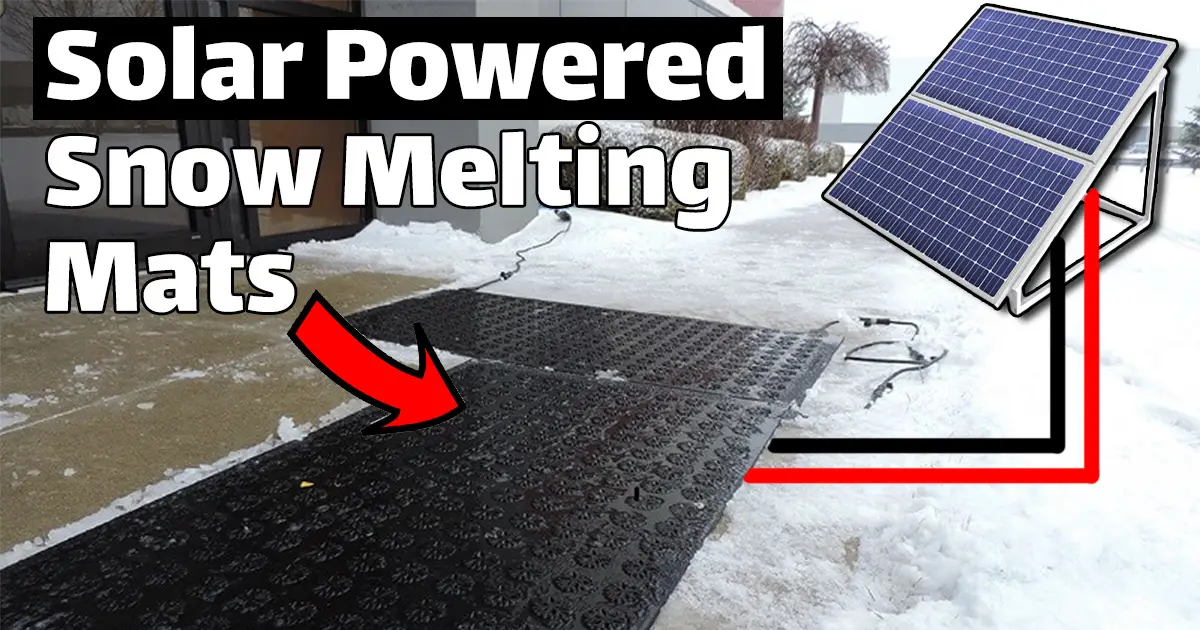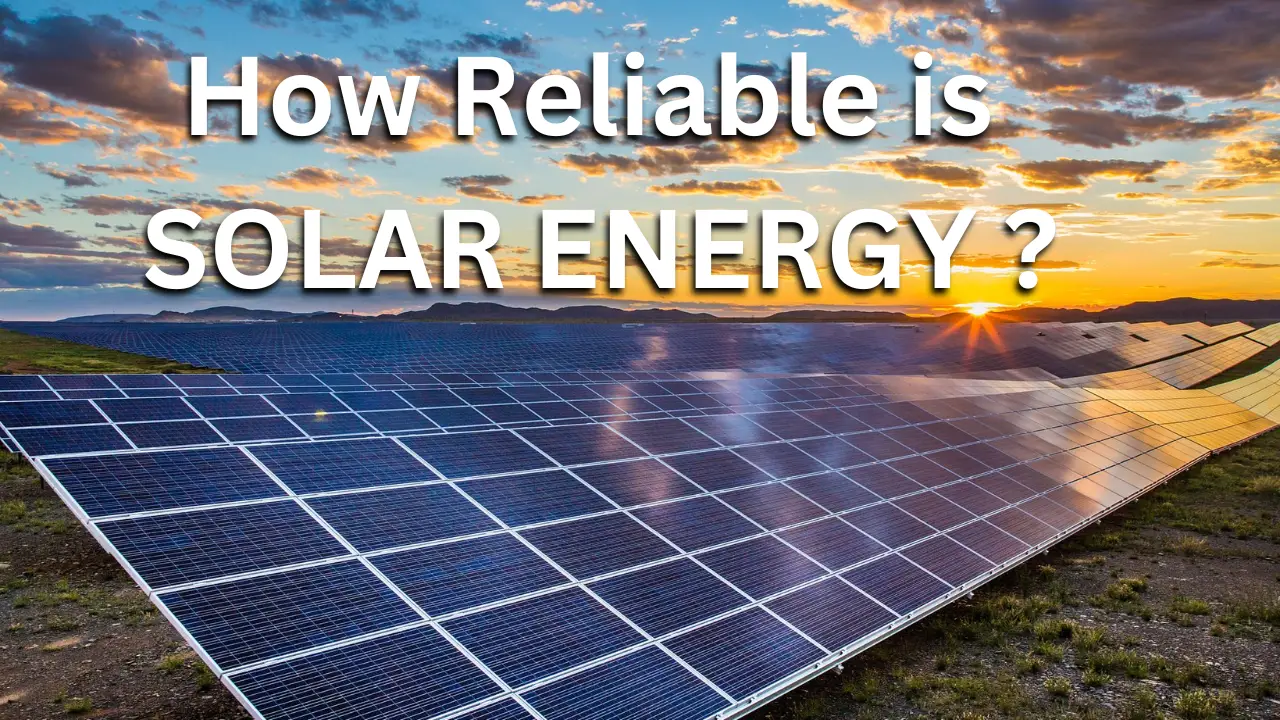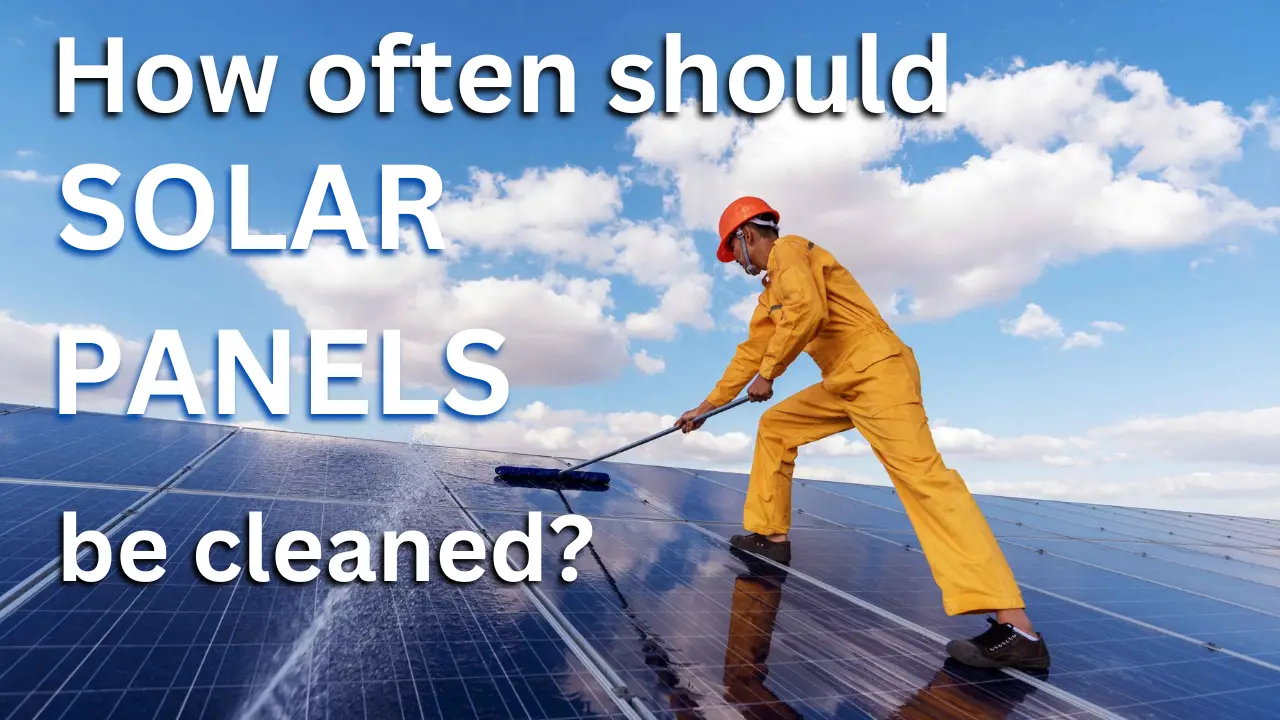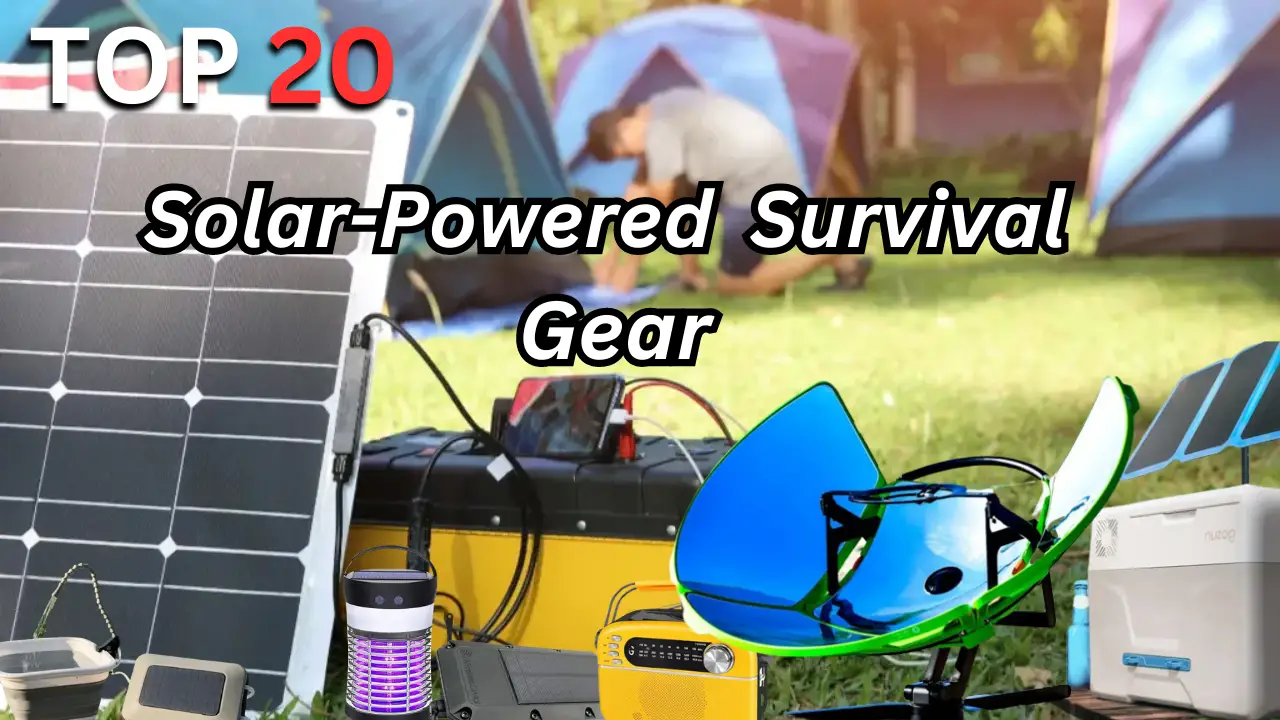Hot tubs are a luxurious addition to any backyard, providing relaxation and comfort for you and your loved ones. However, operating a hot tub can be expensive, with high energy costs being a major concern.
With the growing popularity of renewable energy sources, you may be wondering if it’s possible to run a hot tub on solar power. Solar power is a clean, sustainable, and cost-effective way to generate electricity, making it an attractive option for powering your hot tub.
In this article, we will explore whether or not it’s possible to run a hot tub on solar power and what steps you need to take to make it happen.
It is possible to run a hot tub on solar power, provided that you have a sufficiently sized solar panel system. The number of panels required will depend on the size of your hot tub, your location, and your energy usage. Additionally, you may need to install a solar power system, including solar panels, an inverter, and a battery bank.
Can You Run a Hot Tub on Solar Power?
Yes, it is possible to run a hot tub on solar power. However, there are several factors to consider before doing so.
Firstly, hot tubs require a significant amount of energy to operate, especially when heating the water. This means that you would need a large and efficient solar power system to generate enough electricity to power your hot tub.
Secondly, the location of your hot tub and the solar panels is also important. Your solar panels should be installed in a location that receives adequate sunlight throughout the day, ideally facing south and with minimal shading.
Thirdly, you may need to invest in additional equipment, such as batteries or an inverter, to store and convert the solar energy for use in your hot tub.
Lastly, it is important to consult with a qualified solar energy professional to ensure that your system is properly designed, installed, and maintained to ensure reliable and safe operation.

Advantages & Disadvantages of a Solar Power Hot Tub
Even though it seems a win-win situation for you to have a solar-powered hot tub, everything has benefits and drawbacks.
Advantages of a Solar Power Hot Tub
There are several reasons why people are using solar energy more and more. Here, we’ll show you why solar-powered hot tubs are currently a big deal.
- Save Money: Solar-powered hot tubs can save you money by eliminating the need to pay for electricity to power the hot tub.
- Environment Friendly: Solar energy is a clean and renewable option, making solar-powered hot tubs an environmentally friendly choice.
- Easy to Install: Installing a solar heating system is easy, either by DIY or hiring a specialist to do it for you.
- Always Available: Solar-powered hot tubs can be used at any time of day or year as long as the battery is fully charged.
- Reliable: Solar energy is reliable and always available, unlike electricity which can go out anytime.
Disadvantages of a Solar Power Hot Tub
There are certain drawbacks also –
- Requires Battery Storage: The system will only work when the sun shines, so battery storage capacity is necessary for nighttime or cloudy days.
- Safety Concerns: Proper electrical connections and GFCI installation are crucial for safety.
- Higher initial cost: Solar hot tubs tend to have a longer lifespan than those powered by gas or electric heaters, but initial costs may be higher.
How to Heat a Hot Tub by Solar Power
Hot tubs can be heated using one of two methods. The water from the hot tub must first go via a heat-exchanging panel in the first method. The second method uses conventional solar panels that are directly connected to energy-storing batteries.
Which approach is best for you? Let’s look more closely.
#1 The Heat Exchange Panel Approach
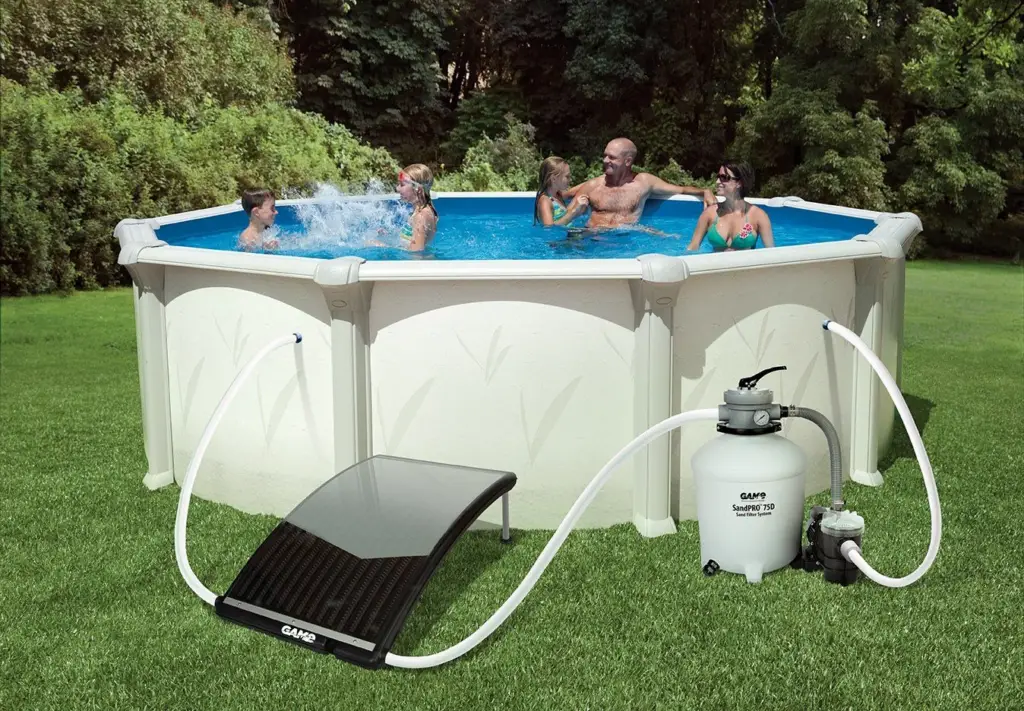
The simplest way to use the sun’s rays to heat your hot tub is to use heat exchange panels. The technology is still simple but efficient.
But to make it work, you’ll need at least six hours of steady, powerful sunlight each day where you live. How does this method work?
The cold water traverses the heat exchanger as it leaves the hot tub’s bottom. The heat-exchanging panel is a sizable panel with numerous tiny tubes weaving around it. These tubes let the passage of water through them.
The tubes are set against a pitch-black background, absorbing heat in the process. The front of the panel is frequently covered with a perspex or glass covering, which assists in intensifying the heat.
The sun’s rays heat the chilly water as it travels through these tiny tubes. It goes through the other end of the heat exchanger after being heated. The water is then piped into the hot tub’s upper section from there. The water cools down and then descends to the system at the bottom of the hot tub, where it is heated up once more.
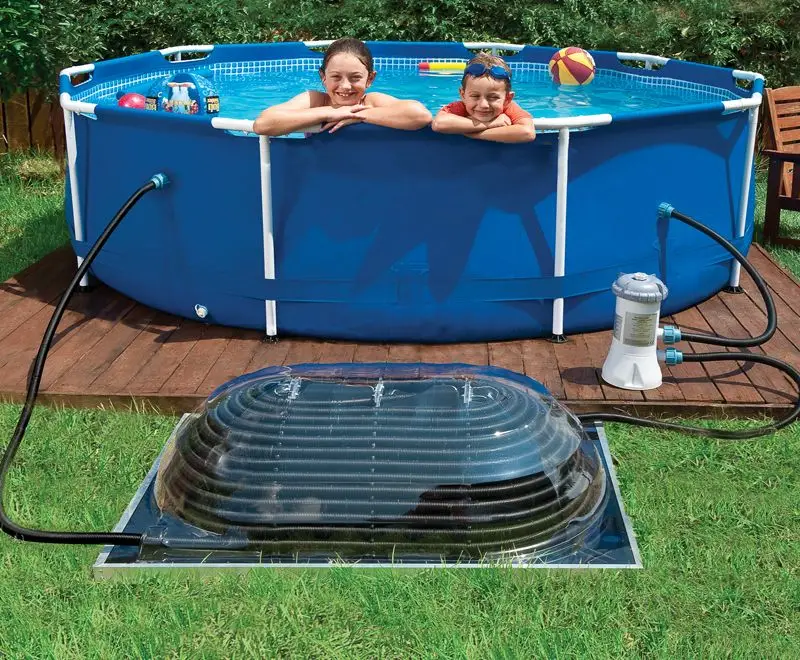
Pros:
- A relatively inexpensive and low-tech solution, all you’ll need are connecting tubes and a small pump.
- Creates lots of free hot water in sunny climates.
- Maintenance-free as it doesn’t rely on moving parts or mechanics that can break down.
- Easy to fit and compatible with the electric heating system.
Cons:
- Requires a large heat exchange panel (up to 6ft x 2ft).
- You may need more than one panel to provide enough adequate hot water.
- Lack of temperature control could lead to dangerous situations such as extremely hot water.
- No energy storage option for excess solar energy.
#2 The System And Battery Approach
What other choices do you have for a solar-powered hot tub? Solar panels and solar batteries can be used to collect energy from the sun and that’s the second approach. However, you’ll need to invest in a solar kit if you want to start using this method.
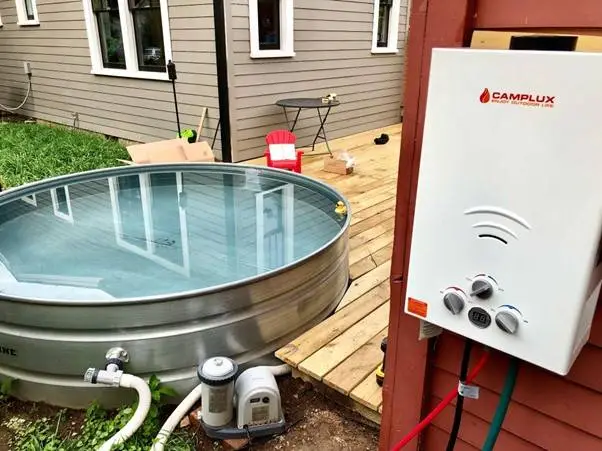
You will also need to maintain an electrical heating system, much like with the heat exchanging panel strategy. After all, a solar kit won’t be able to supply all the electricity needed for a hot tub on its own.
What is the cost of this conversion for a solar-powered hot tub? These kits run over $2,000, but they will last you for a very long time. Additionally, according to the majority of experts, switching to a battery-powered system won’t void the warranty on your hot tub. Just keep in mind to confirm with your manufacturer to be certain.
Solar Hot Tub Installation Tips and Warnings
Installing solar panels or a solar heat exchanger kit is simple. But follow these tips to get the most out of your hot tub-
- Location is key when it comes to installing solar panels for your hot tub. For most people, the panels must be mounted at a 30 to 45-degree angle and facing south to ensure optimal sunlight exposure.
- Ensure that the site where you install the solar panels receives 5 to 6 hours of sunlight daily to heat your hot tub effectively.
- Consider investing in a solar controller, which can provide thermostat capabilities for your hot tub, and turn off the solar heating system when it rains or at night. Although this will add to the cost of your installation, it could be worth it if you use your hot tub frequently.
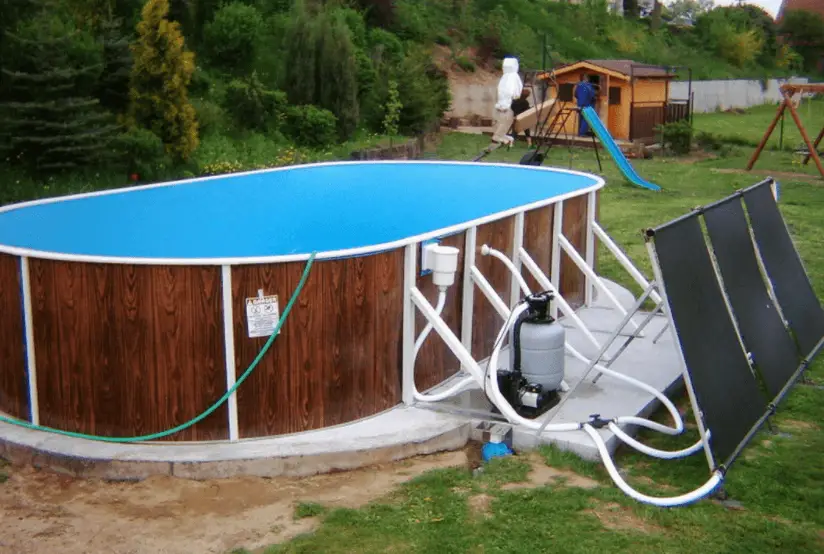
How Do You Heat a Hot Tub with Solar Panels?
There are several ways to heat a hot tub with solar panels, but the most common method is to use solar panels to generate electricity for an electric water heater. This involves installing solar panels on your property and connecting them to an inverter, which converts DC current to AC. The AC power can then be used to run the electric water heater, which heats the water in your hot tub.
To ensure that you have a constant supply of electricity, it’s important to connect batteries to your solar panels so that you can store the electricity they generate for use at night or on cloudy days when the panels aren’t producing as much power. It’s also important to install monitoring software to keep track of how much power your panels are generating and what appliances are using that power.
Another option for heating an outdoor hot tub with solar power is to use thermal mass storage technology, which can store the sun’s warmth for longer periods of time without significantly affecting your energy bills. This involves using materials like water or rocks to store heat during the day and releasing it at night to keep your hot tub warm.
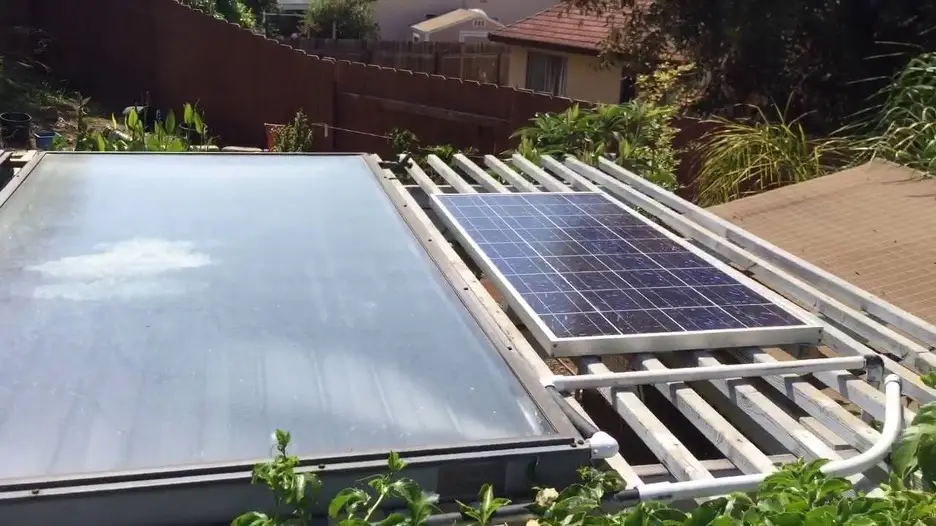
If you’re considering a solar-powered hot tub, it’s important to choose a professional installer who can help you choose the right size and type of solar panels for your needs and ensure that the installation is safe and compliant with all local regulations.
With the right installation and maintenance, a solar-powered hot tub can be an efficient and environmentally friendly way to enjoy a relaxing soak outdoors.
Can I Heat My Hot Tub with Solar Power in Winter?
Winter solar hot tub heating requires extra planning. Solar panels produce less electricity in the winter due to the reduced amount of sunlight available, so you may need a backup energy source.
One solution is to add a solar hot water heater to your solar panels. This technology stores solar energy and heats your hot tub at night. This will preheat your hot tub by winter, making it more comfortable even in the snow.
Another solution is to use a hybrid heating system that mixes solar energy with gas or electricity. This will keep your hot tub warm on cloudy days when solar panels may not generate enough electricity.
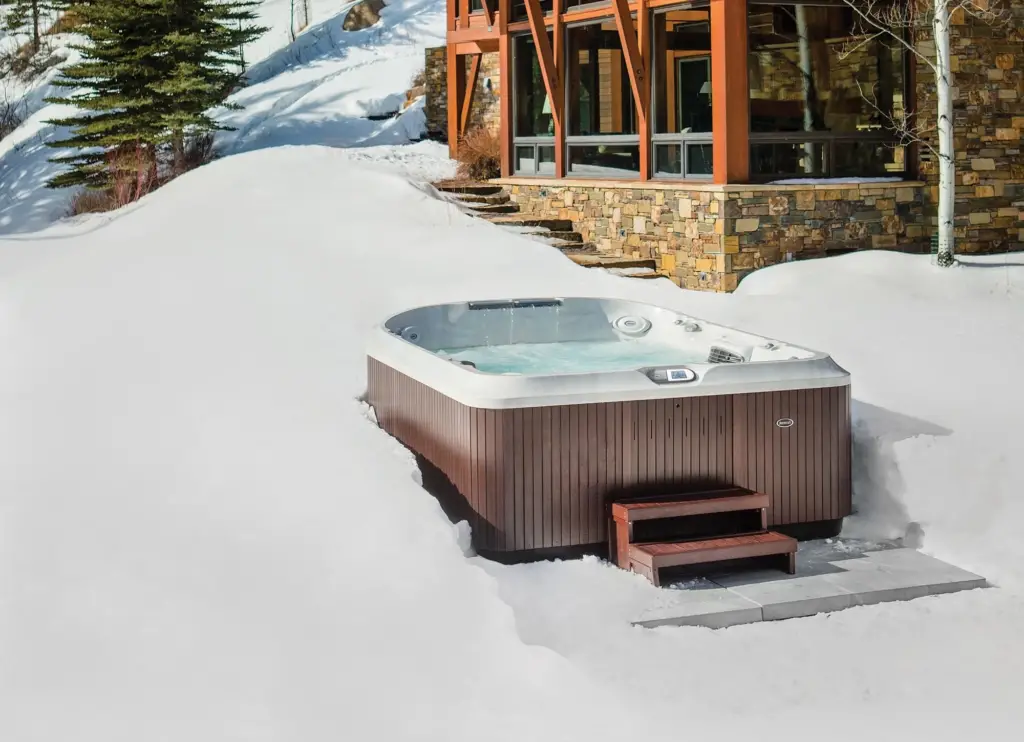
How Much Will a Solar Hot Tub Cost Me?
The cost of a solar hot tub will depend on various factors, such as the size of your hot tub, the type of solar heating system you choose, and the professional installer you hire. It’s important to note that the initial cost of installing a solar heating system will be higher compared to traditional methods, as professional installation is crucial for the system to work effectively.
In terms of ongoing costs, solar hot tubs are a more economical option in the long run because you won’t have to pay for electricity or gas bills. The money you save will depend on your energy usage and how well you maintain your solar panel system.
If you’re currently spending $200-$300 monthly on heating your hot tub, a solar-powered alternative can help you save money and reduce your environmental impact. However, if the initial investment is not feasible for you at the moment, it’s better to stick with traditional methods until you can afford to make the switch.
Conclusion
In conclusion, if you’re looking for a sustainable and cost-effective way to power your hot tub, running it on solar power is a great option. You can save money on electricity costs, reduce your carbon footprint, and enjoy your hot tub all year round.
However, before you make the switch, you need to consider the size of your hot tub, energy usage, the location of your hot tub, and the necessary equipment, such as batteries or an inverter.
It is essential to consult with a qualified solar energy professional to ensure that your system is properly designed, installed, and maintained to ensure reliable and safe operation. With the right solar power system in place, you can relax and soak up the sun while enjoying the comfort of your hot tub.


